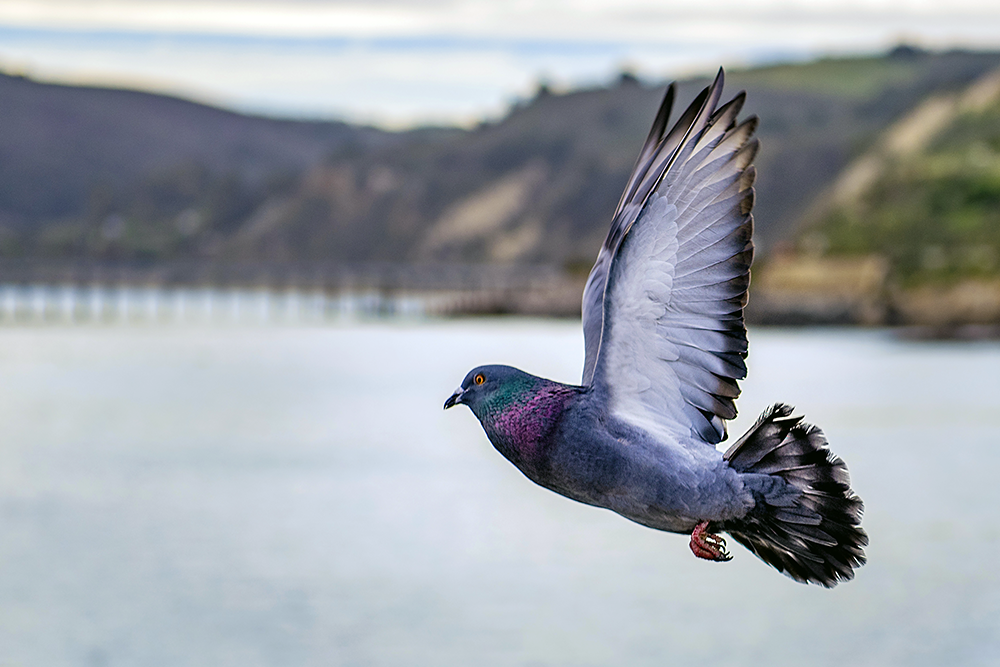Challenging traditionally anthropocentric views on worship, the Revd Ian Tattum considers whether animals have an inner spiritual life and can sing the praises of God.
On the 20th June 1855 as the foundation stone for the Science Museum in Oxford was laid, the group of scientists and clergy presiding over the event sang the Benedicite.
As they chanted
Bless the Lord you whales and all that swim in the waters:
Sing his praise and exalt him for ever.
Bless the Lord all the birds of the air:
Bless the Lord you beasts and cattle:

I wonder if they paused for a moment to think about the implications of what they were singing? They, probably, took it as an essential component of the Church of England’s traditional liturgy which fittingly extolled the goodness and beauty of God’s creation. I doubt that anyone present gave the spiritual life of whales, birds or cattle even passing consideration.
At a meeting with fellow clergy a while ago I took a straw poll of their views on the possibility that animals had an inner spiritual life, and the result was a resounding negative. I didn’t have the opportunity to probe deeper into their reasons and was anyway immediately discouraged by their adamantine response to what they seemed to see as an utter absurdity. If there had been a chance to discuss further, I suspect that their various theological traditions might have come into play. If you believe that salvation is orientated around the faith of the individual human, or located in the reception by humans, of the sacrament of Eucharistic fellowship or sacrifice, there is little room in the inn for our fellow creatures. But I don’t doubt that the anthropocentrism which runs very deep in our culture also contributed to their viewpoint. If humans are qualitatively different, which is usually taken to mean superior, how can the words of the Benedicite and psalm 148, which largely inspired it, be anything but poetic metaphor?
I have recently started writing poems and in them one of the themes I find myself preoccupied by, revolves around the continuities and discontinuities between humans and other animals. In the wake of the environmental crisis , I have found myself both drawn to celebrate the common ground between us and the qualities that distinguish us. The first seems vital in the cause of empathy, the second for respect. In a recently published poem about the pejoratively named ‘Feral pigeon’, I concluded with a rejection of the contempt that particular bird is often treated with, and a note of affinity.

‘No , you are an urban rock dove, and like me,
A being of elsewhere, trying to make a city a home.’
But trying to imagine and put into words how a butterfly might perceive a human child sent me to the library in a forlorn search for any scientifically garnered insights.
There is no doubt that there is more attention paid to our kinship with other beings now, but we still have to shake off the legacy of the past; including unavoidably the long shadow of Descartes and often related hierarchical concepts of being.
Descartes, notoriously, argued that animals can not feel pain and only appear to suffer, as they are machines- mechanical devices devoid of mind or soul. And it could be argued that some types of behaviourism and political thinking in the last century, extended the same reasoning to human beings, so that rather than differentiating human from animal, all animals , from the ‘lowest’ to the ‘highest’ came to be regarded as robots controlled by social or neurological programming! Even humans are not really human.
At the same time, it has only been very recently that various strategies to defend human uniqueness have been challenged. Those appeals to humans’ ability to make tools, to practice morality and construct architecture, for example.
Now that we know that some bees have been accounted tool users for their strategies to deter wasps from their nests, that chimpanzees appear to have ethics, and termites construct complex structures with inbuilt ventilation systems, many of us are not so confident of qualitative distinctions.

But even when such differences are eroded there is still a reluctance to give high value to the inner life of animals. People, including many scientists , can be reluctant to attribute consciousness to any but the most neurologically complex animals, such as cetaceans and cephalopods. Those of us who are greatly concerned about animals’ suffering and see care and protection of them as a religious imperative still often take an anthropocentric view. And so remain extremely wary of the idea that they may be able to sing praises to God, whatever the Benedicite might tell us!
This biblical tradition that the whole of creation outside humanity also has worth, ways and a voice of its own seems to me to be very helpful for the situation of today.
Whether that is the animals being created for companionship in Genesis 2, or God seeking to convey to Job the limits of human understanding by alluding to the mysterious habits of wild animals in Job 39.
Or the ravens who brought food to Elijah at God’s command in I Kings, or indeed the rejoicing trees of Isaiah 55!
And I will give the last word, appropriately perhaps to Balaam’s ass. Who according to a rabbinic tradition was typical of his creature kind in being able to see spiritual realities invisible to humans.
The Revd Ian Tattum is a published poet and vicar of St Barnabas, Southfields.




